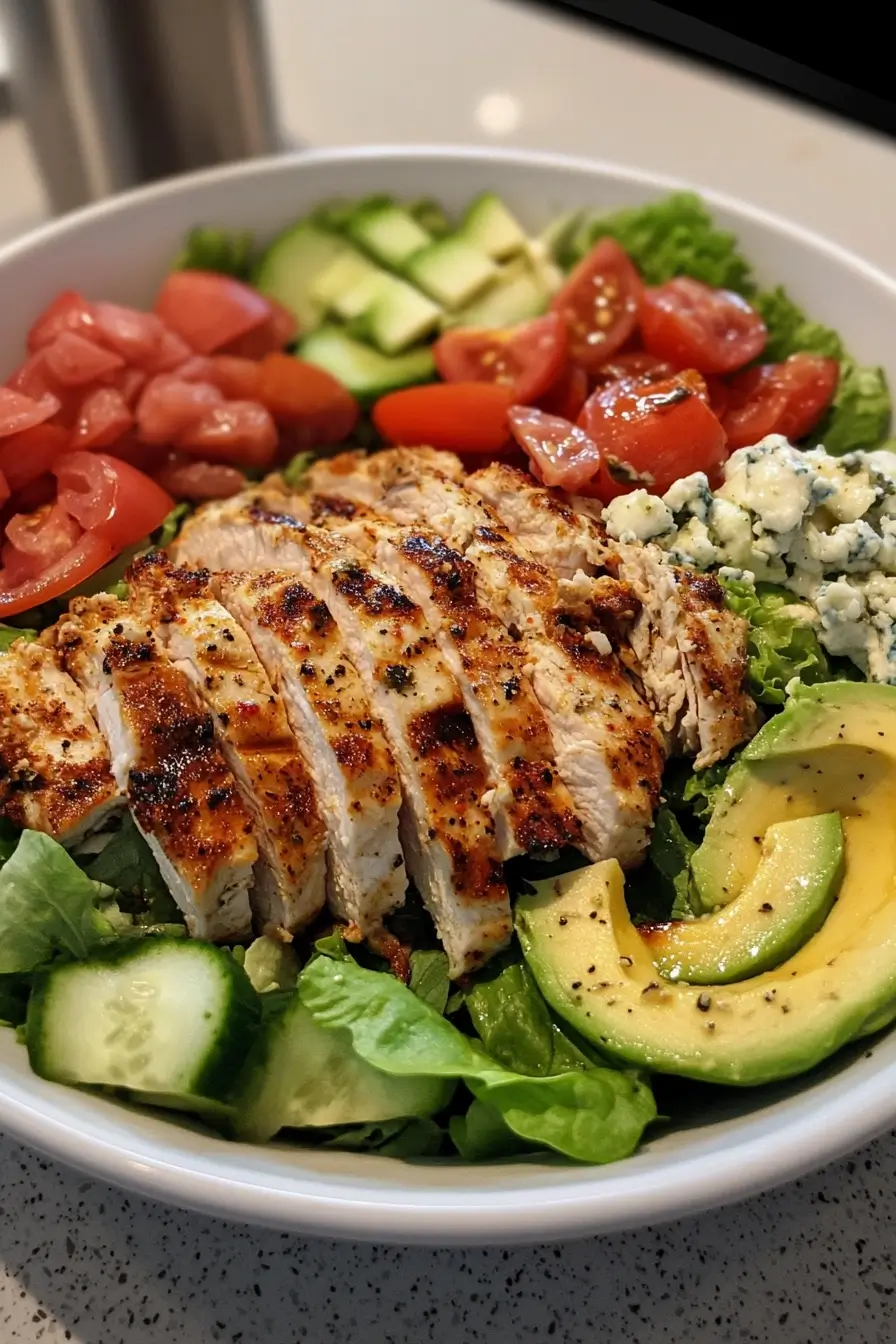Cobb Salad Calories , a classic dish beloved by many for its savory ingredients and hearty texture, is often chosen as a fulfilling meal option. However, the calorie content of Cobb salad can be quite high due to its rich components like bacon, eggs, and cheese. In this article, we’ll delve into what makes up a Cobb salad, explore the calories in each ingredient, and discuss ways to enjoy this tasty dish within a balanced diet. Furthermore, we’ll compare it to other popular salads and offer tips for creating a lower-calorie version that doesn’t skimp on flavor. Let’s dig in!
Introduction to Cobb Salad
What Exactly is a Cobb Salad?
A Cobb salad isn’t just any salad; it’s a culinary icon with a colorful history. Originating from the Hollywood Brown Derby restaurant in the 1930s, it was supposedly thrown together from leftovers by the restaurant owner, Robert Cobb. This impromptu dish has since become a staple on menus across America.
Key Ingredients of a Cobb Salad
Traditionally, a Cobb salad includes a mix of lettuce, tomato, crisp bacon, boiled eggs, chicken breast, avocado, chives, Roquefort cheese, and a vinaigrette dressing. Each ingredient adds not only flavor but also a range of nutritional benefits. Here’s a breakdown:
- Lettuce: Usually iceberg, providing a crunchy texture and a cool, fresh taste.
- Tomatoes: A great source of vitamin C and lycopene, adding a burst of color and juiciness.
- Crisp Bacon: Offers a smoky flavor, though it’s high in fat and calories.
- Boiled Eggs: Contribute high-quality protein and richness.
- Chicken Breast: Another excellent protein source, making the salad more filling.
- Avocado: Delivers healthy fats and a creamy texture that contrasts nicely with the other components.
- Chives and Roquefort Cheese: Provide a sharp, tangy flavor kick that defines the classic Cobb profile.
Each component plays its part in creating the delicious and complex flavors we associate with a Cobb salad. Yet, when combined, these ingredients can also pile up the calories, making it a dish best consumed in moderation if you’re watching your diet. Indeed, while Cobb salad offers a good balance of nutrients, its calorie content can be a concern for those trying to maintain a healthy weight. Therefore, understanding the caloric impact of each ingredient can help in making smarter dining choices.
To learn more about balancing your diet, visit Healthy Eating Guidelines, which provides tips and tricks for incorporating nutritious meals into your daily life.

4 thoughts on “Cobb Salad Calories: A Detailed Nutritional Guide”